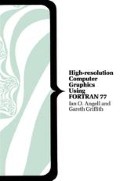Abstract
We are now able to draw wire diagrams representing any scene. We would like, however, to consider solid objects, in which case the facets at the front will obviously restrict the view of the facets (and boundary lines) at the back. In order to produce such a picture we must introduce an algorithm which determines which parts of a surface or line are visible and which are not. Such algorithms are called hidden surface or hidden line algorithms, depending upon their purpose. There are many of these algorithms, some elementary for specially restricted situations, others very sophisticated for viewing general complicated scenes (Sutherland et al., 1974). In this book we shall consider a variety of approaches ranging from the very simplest types in this chapter, to examples of general-purpose algorithms in chapters 12 and 13.
Preview
Unable to display preview. Download preview PDF.
Author information
Authors and Affiliations
Copyright information
© 1987 Ian O. Angell and Gareth Griffith
About this chapter
Cite this chapter
Angell, I.O., Griffith, G. (1987). Simple Hidden Line and Surface Algorithms. In: High-resolution Computer Graphics Using FORTRAN 77. Macmillan Computer Science Series. Palgrave, London. https://doi.org/10.1007/978-1-349-18644-0_10
Download citation
DOI: https://doi.org/10.1007/978-1-349-18644-0_10
Publisher Name: Palgrave, London
Print ISBN: 978-0-333-40399-0
Online ISBN: 978-1-349-18644-0
eBook Packages: Computer ScienceComputer Science (R0)

